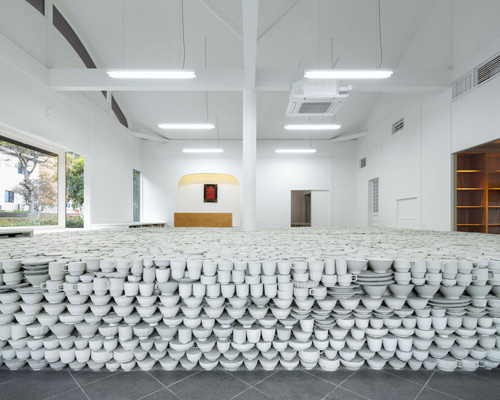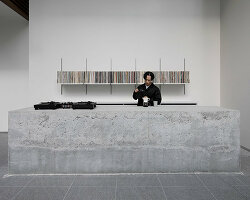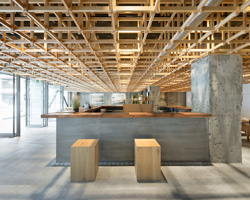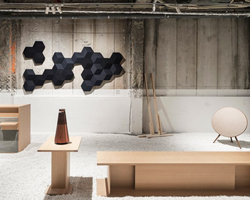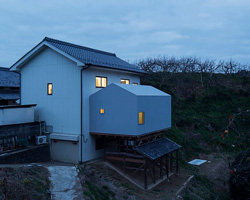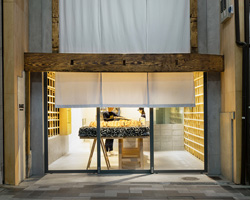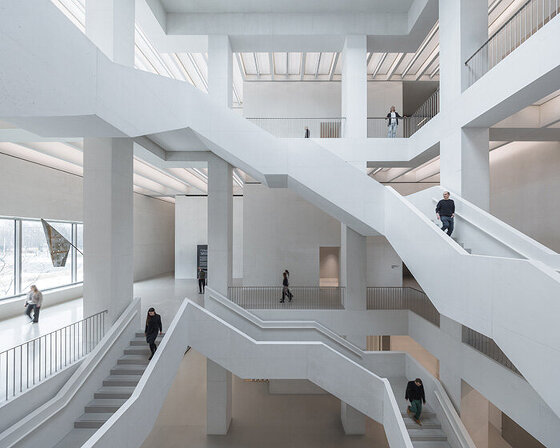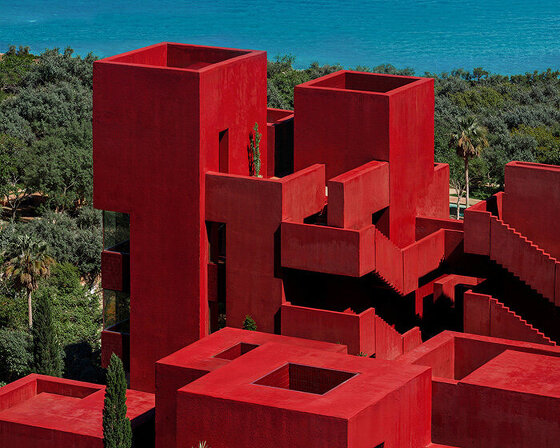yusuke seki layers unwanted ceramic tableware to form elevated platform in japan
photography by takumi ota
featuring 25,000 pieces of ceramic tableware, japanese designer yusuke seki has taken these locally sourced items of plates, cups, and bowls, all with imperfections to create the elevated centerpiece of the maruhiro flagship store. located in the nagasaki prefecture, an area rich in artisan traditions, the interiors highlights this history by merging architectural design in creating this stacked platform. characterized by layers of built up tableware filled with concrete, each of the flawed pieces are called ‘shinikiji’, and were discarded due to the imperfections found after the initial bisque-firing by their respective local production facilities.
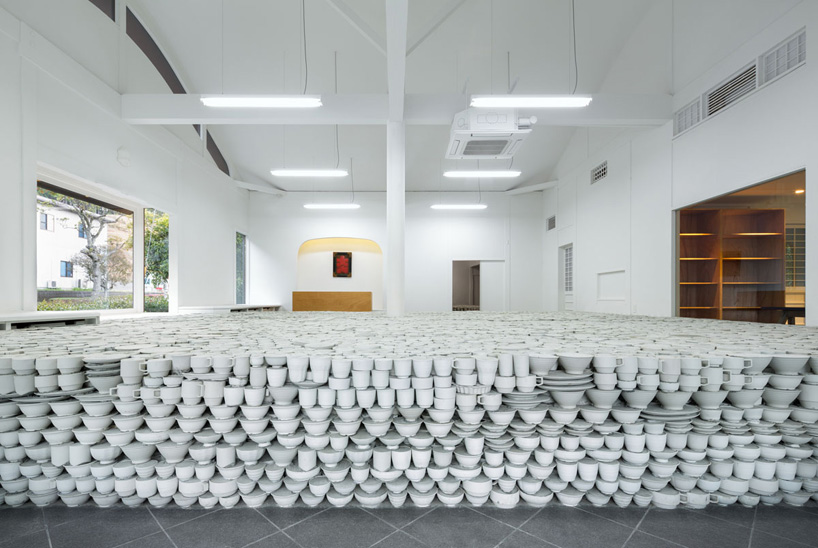
25,000 pieces of ‘shinikiji’ ceramics was stacked to create this platform
reinterpreted as bricks, they form a floor to support the simple timber plinths showcasing the products on sale. the reverential platform was purposely left in their original shade of white, to highlight the colorful maruhiro ceramics on display, yusuke seki comments: ‘an archaeological mille-fille of the long industrial history of this region—this also creates a sense of reverence for this history, conveying the fragilely of the each individual item, engineered together to inspire and cultivate respect for the legacy on the whole.’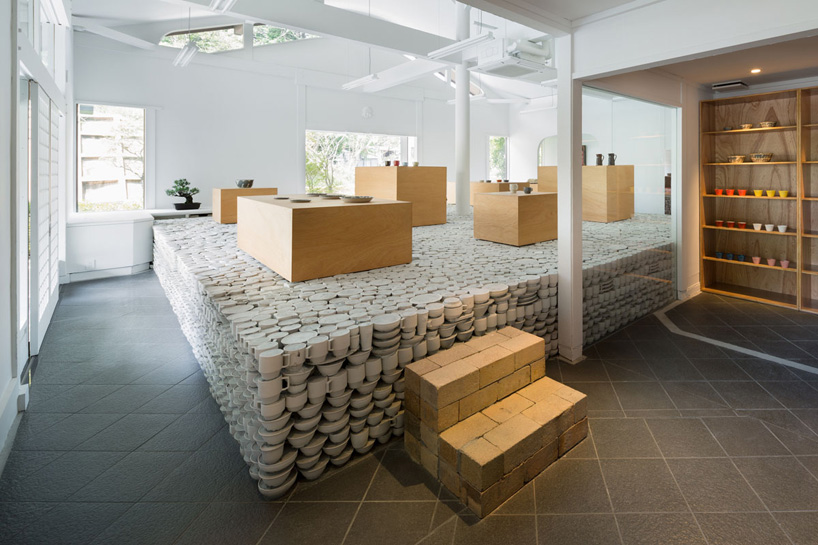
customers step up onto the platform to see the products on display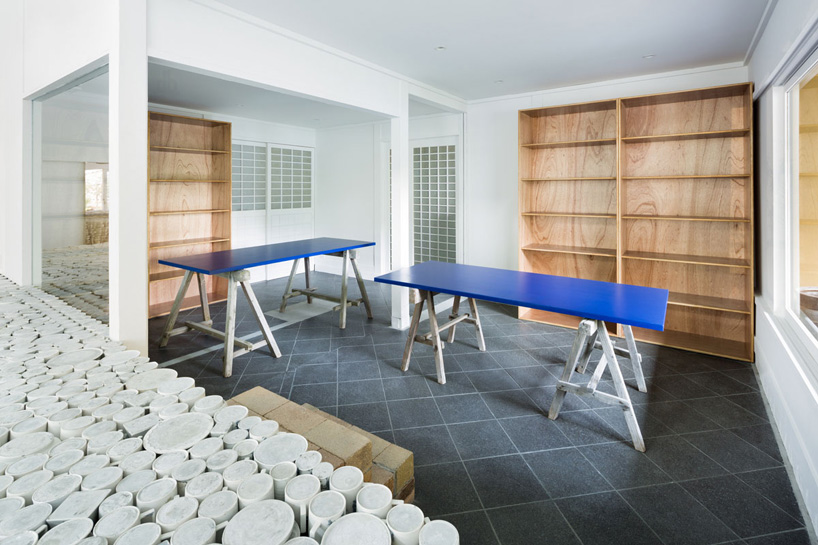
located in the nagasaki prefecture, japan, it is an area rich in artisanal traditions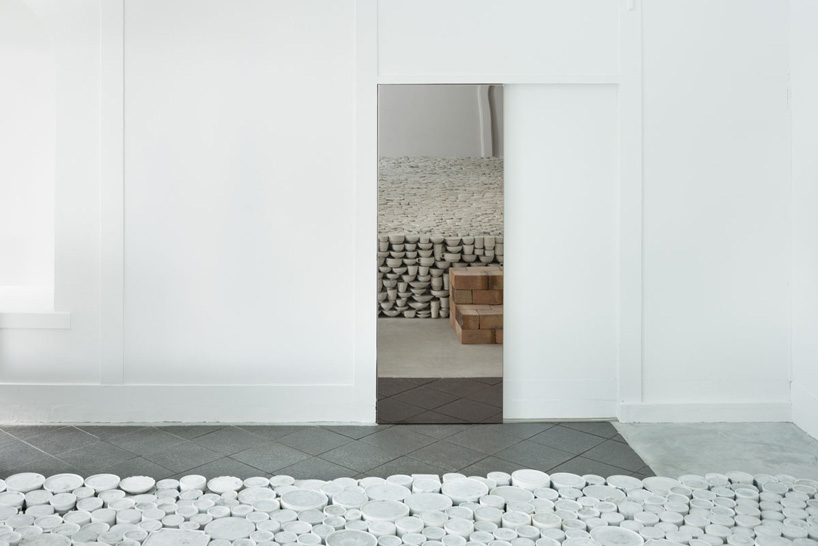
filled with concrete, the ceramic display is an installation in itself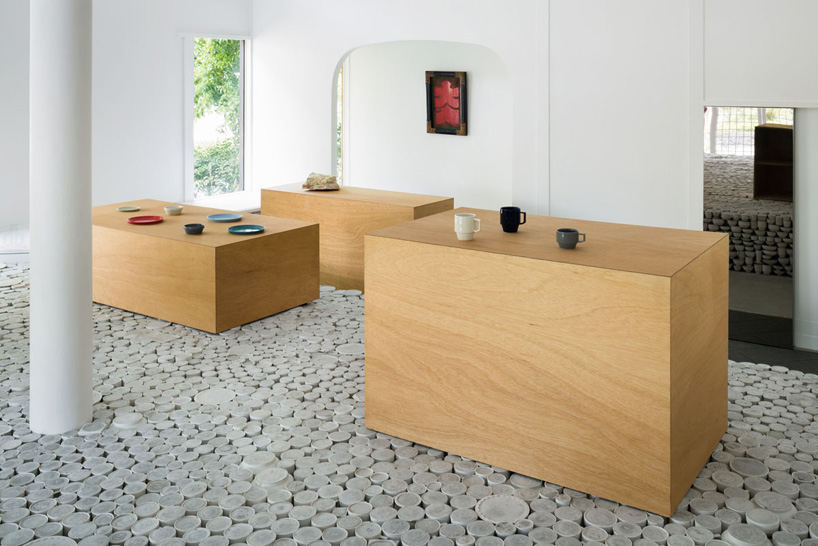
the pieces on sale are glazed and of a more colorful nature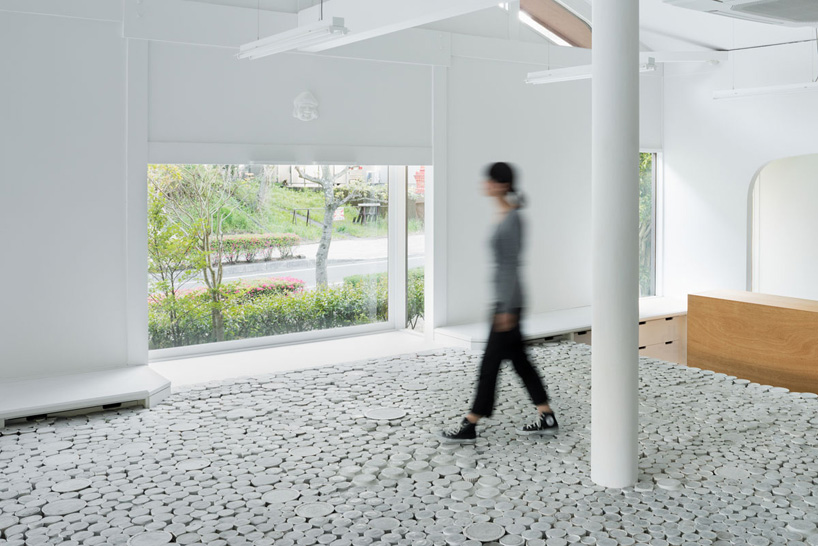
seki uses the discarded tableware, and transforms them as a new architectural material for this occasion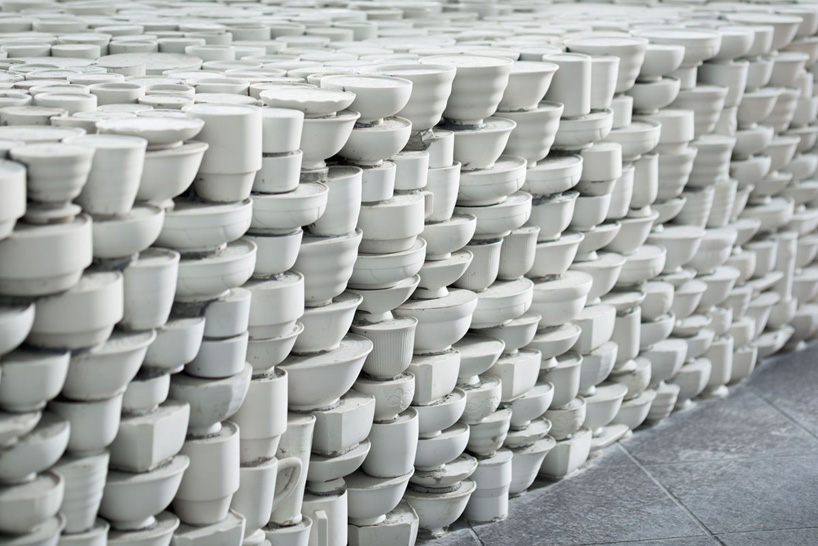
each of these pieces called “shinikiji” in japanese, were found to be flawed after the initial bisque-firing
filled with concrete to give them more support and robustness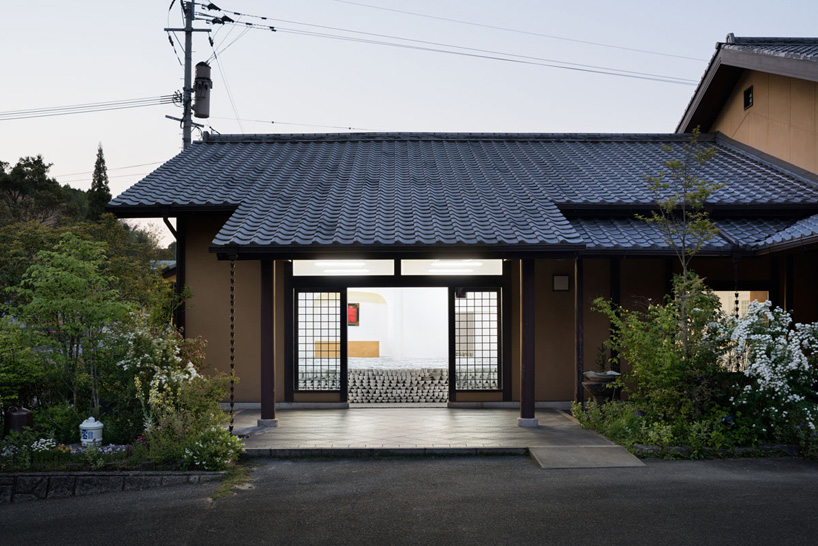
exterior of the ceramics flagship store
